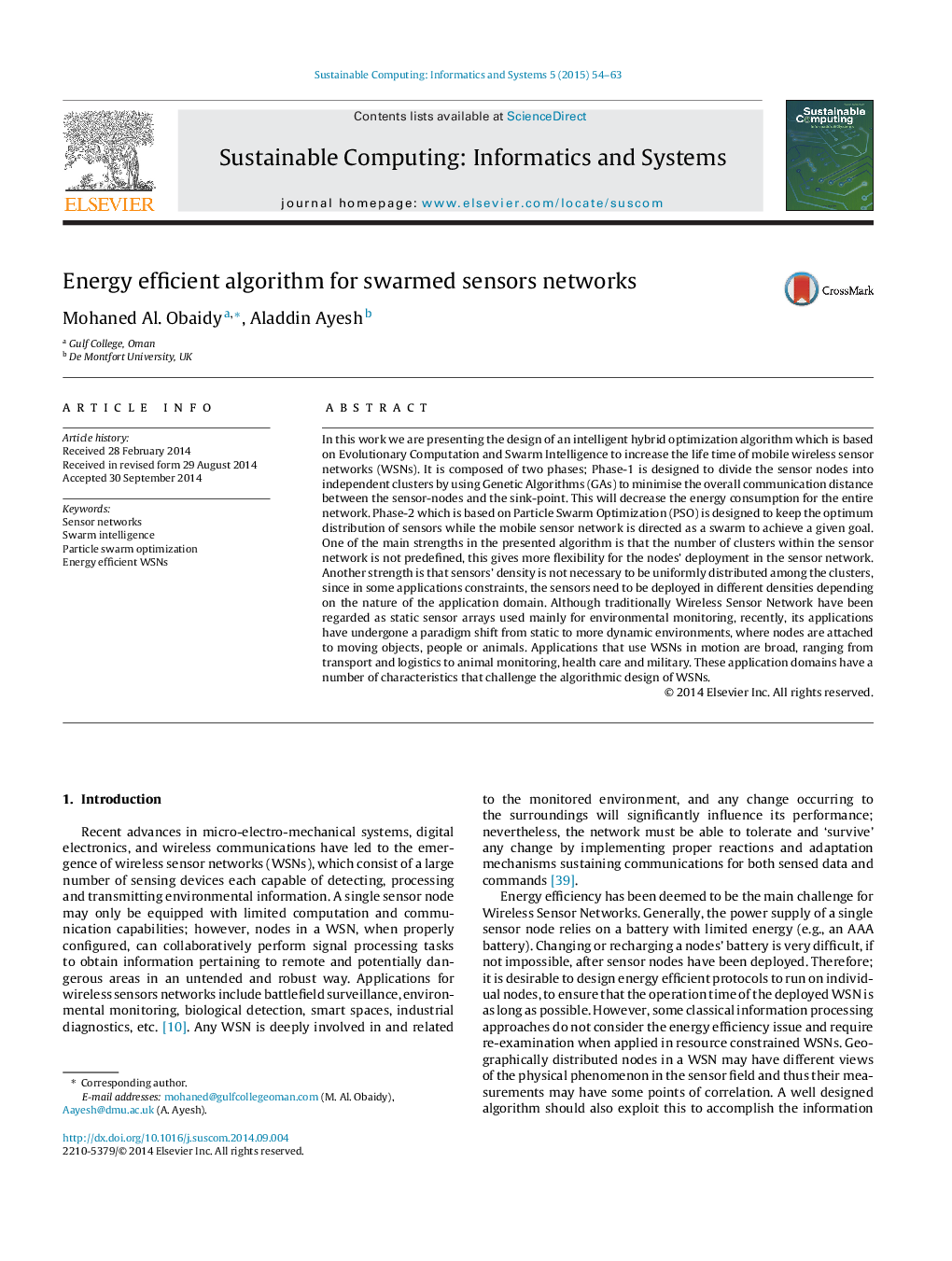| Article ID | Journal | Published Year | Pages | File Type |
|---|---|---|---|---|
| 493624 | Sustainable Computing: Informatics and Systems | 2015 | 10 Pages |
•Clustered wireless sensor networks are more energy efficient than direct transmission.•Swarm intelligence helps mobile sensor nodes to move in a swarm bases.•Particle swarm optimization is a powerful technique to control the autonomous movements of energy efficient sensor networks.
In this work we are presenting the design of an intelligent hybrid optimization algorithm which is based on Evolutionary Computation and Swarm Intelligence to increase the life time of mobile wireless sensor networks (WSNs). It is composed of two phases; Phase-1 is designed to divide the sensor nodes into independent clusters by using Genetic Algorithms (GAs) to minimise the overall communication distance between the sensor-nodes and the sink-point. This will decrease the energy consumption for the entire network. Phase-2 which is based on Particle Swarm Optimization (PSO) is designed to keep the optimum distribution of sensors while the mobile sensor network is directed as a swarm to achieve a given goal. One of the main strengths in the presented algorithm is that the number of clusters within the sensor network is not predefined, this gives more flexibility for the nodes’ deployment in the sensor network. Another strength is that sensors’ density is not necessary to be uniformly distributed among the clusters, since in some applications constraints, the sensors need to be deployed in different densities depending on the nature of the application domain. Although traditionally Wireless Sensor Network have been regarded as static sensor arrays used mainly for environmental monitoring, recently, its applications have undergone a paradigm shift from static to more dynamic environments, where nodes are attached to moving objects, people or animals. Applications that use WSNs in motion are broad, ranging from transport and logistics to animal monitoring, health care and military. These application domains have a number of characteristics that challenge the algorithmic design of WSNs.
